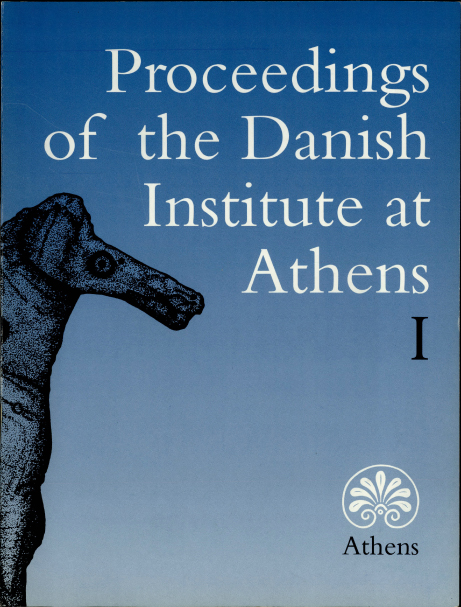The Early sanctuary of the Argive Heraion and its external relations (8th -early 6th century B.C.)
Abstract
The Geometric bronzes from the Argive Heraion and Argos, primarily from the sanctuaries, are compared to clarify relations between the two sites. The bronze statuettes, quadrupeds and birds, from the Heraion are of Thessalian, Central Greek, Peloponnesian, primarily Arcadian, or local origin, the local qudrupeds being influenced by Arcadia. Of three known figures from Argos, a local warrrior shows Laconian relations and a Central Greek bird differs from the Heraion types. The personal ornaments from the Heraion come from the same regions as well as Macedonia, the ornaments found at Argos from Arcadia, in addition to insular fibulae of types unknown at the Heraion. E P C vases and pins local to the Corinthia and the Argive Heraion (Geometric I C and III) are absent in Argos, the Argos “Kalotten-schale” and pins of Geometric XVIII A and XX at the Heraion. The EG/MG bronzes (in Argos known only from tombs) differ at the two sites. Although both show connections with Arcadia, the LG Heraion is more closely related to Corinthia than to Argos, which has ties to Laconia. Bronze tripods are unknown at Argos, but develop at the Heraion from MG II to Subgeometric, presumably locally produced by itinerant artisans, connected especially with the eastern Mainland regions. According to the evidence of the bronzes (the only Geometric material adequately published), the Argive Heraion developed slowly fromaround 900 BC or earlier, independently of Argos. From MG II onwards, inhabitants of Argos increasingly visited the Heraion, but never outnumbered other Mainland Greek visitors; apparently they were mainly women, not influential and wealthy men. The LG II/S u b g eo metric votive bronzes from the neighbouring small Hera sanctuary are similar to those of the Heraion; the contemporary deposits in the surrounding Mycenaean tombs, however, are only similar in part, perhaps because they were made primarily by male visitors.
Downloads
Published
How to Cite
Issue
Section
License
The authors and Proceedings of the Danish Institute at Athens own the copyright to the published articles and reviews.





